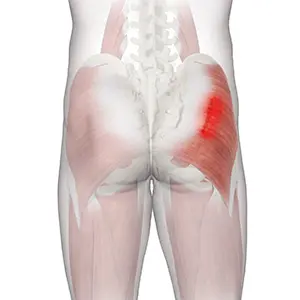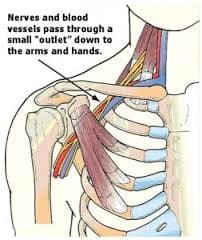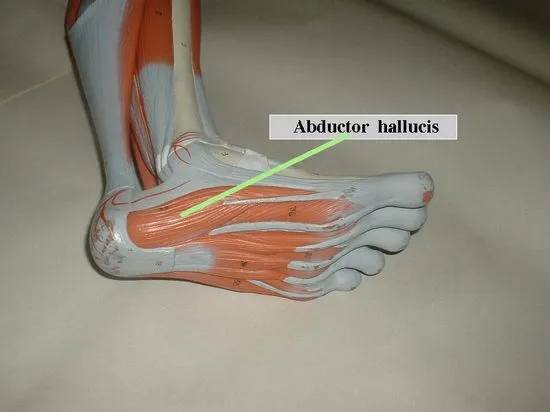The Runner’s Guide to Injury Prevention: Stay on Track with Proven
Why was the marathon runner put in jail? For resisting a rest.
Although it’s funny, or not really, it’s time to get informed about this all-time favorite leisure.
Running is indeed an exhilarating recreational activity that can be enjoyed either solo or in the company of friends. As enjoyable as it may appear, running can seem deceptively simple when merely taking strides to break personal distance records. However, it requires both physical strength and energy, demanding injury prevention and running safety tips.
Let’s go the extra mile to cover the essential information you need to know.
The Wellness in Running Safely
Running safely not only makes your runs more enjoyable but also offers a bunch of physical and mental perks. Imagine going for a run on your favorite trail, breathing in the fresh air, and feeling the sun on your skin. Knowing you’re safe lets you fully appreciate nature’s beauty. This feeling of security adds a special calmness to your runs, making them more than just exercise; they become refreshing getaways that boost your mood.
Safety also keeps you physically and mentally healthy. It lowers the chances of getting hurt, allowing you to stick to your running routine and reach your goals with enthusiasm. It also helps you relax mentally during your runs, giving your mind the freedom to wander, think, and recharge. When you make safety a priority, you’re setting the stage for a lifelong running adventure that keeps you happy, fit, and mentally sharp. So, running with safety is like adding a touch of joy, health, and well-being to your running experience.
Benefits of Running Everyday
Improved Cardiovascular Health
Daily running can help strengthen your heart, lower blood pressure, and improve overall cardiovascular health. It enhances the efficiency of your circulatory system, reducing the risk of heart disease.
Weight Management
Running is an effective calorie-burning activity. Consistent daily running can help you maintain or achieve a healthy weight by burning excess calories and boosting your metabolism.
Mental Health
Running releases endorphins, which are natural mood-boosting chemicals. Daily runs can help reduce stress, anxiety, and symptoms of depression, promoting better mental well-being.
Enhanced Fitness
Regular running can improve your endurance, stamina, and muscular strength. It tones your muscles and helps you maintain better overall fitness levels.
Discipline and Routine
Running daily instills discipline and a structured routine in your life. It encourages consistency and commitment, which can extend to other areas of your daily life, fostering a sense of accomplishment and control.
Comprehensive Guide and Tips for Runner’s Injury Prevention
Although running provides excellent daily exercise, it’s crucial to prioritize safety by following essential running tips. These safety measures help reduce the risk of injuries and ensure a more enjoyable and sustainable running experience. Whether it’s choosing proper footwear, staying hydrated, or being aware of your surroundings, running safely is essential for both physical well-being and long-term running success. Here are running safety tips for your next run:
Before Your Run:
- Warm-Up
A proper warm-up involves dynamic stretches and movements that increase blood flow to your muscles and joints. Activities like leg swings, hip circles, and arm circles can help loosen up and prepare your body for the upcoming run. Spend 5-10 minutes warming up.
- Proper Footwear

Visit a specialty running store for a gait analysis to determine your foot type (overpronation, neutral, or supination). Select running shoes that offer the right level of support and cushioning based on your gait and running style, avoiding running injuries and pains.
- Terrain Assessment
Before you start, assess your running route for potential hazards like potholes, tree roots, or uneven sidewalks. Being aware of traffic and choosing well-lit routes if running in low-light conditions aids in runner’s injury prevention.
- Hydration
Proper hydration starts well before your run. Aim to drink water throughout the day to ensure you’re adequately hydrated. Avoid excessive caffeine or alcohol consumption, which can dehydrate you.
- Nutrition
Consume a balanced meal or snack containing carbohydrates for energy, lean proteins for muscle repair, and healthy fats for sustained energy about 1-2 hours before your run. Make a smoothie with oatmeal with berries and almonds on your portable smoothie blender to supercharge your run.
During Your Run:
- Proper Form
Maintain good running form to minimize the risk of overuse injuries. Focus on standing tall with a slight forward lean, landing mid-foot, and keeping your arms relaxed. Avoid overstriding, which can lead to shin splints and other issues.
- Pacing
Start your run at a pace where you can comfortably hold a conversation. Gradually increase your speed or distance as your body warms up to prevent overexertion.
- Stay Hydrated
Depending on the weather and the duration of your run, plan to take sips of water or a sports drink to stay hydrated. Don’t wait until you’re thirsty; drink at regular intervals.
- Listen to Your Body
Pay attention to any discomfort or pain during your run. Ignoring pain can lead to more serious injuries. If you experience sharp or persistent pain, consider stopping and seeking medical advice.
- Stretch Breaks
On longer runs, incorporate brief stretching breaks. Perform dynamic stretches like leg swings or hip circles to keep your muscles limber and reduce muscle tightness.
After Your Run:
- Cool Down
Finish your run with a gentle cool-down jog or walk for 5-10 minutes. This gradual reduction in intensity helps lower your heart rate and prevents blood from pooling in your legs.
- Stretching
After your cool-down, perform static stretches for major muscle groups, holding each stretch for 15-30 seconds. Focus on areas like your calves, hamstrings, quadriceps, and hip flexors to improve flexibility and reduce post-run stiffness.
- Rehydration and Nutrition
Rehydrate with water or a recovery drink that contains electrolytes to replace lost fluids. Within 30 minutes of finishing your run, consume a balanced meal or snack rich in carbohydrates and protein to aid muscle recovery. Consuming anti-inflammatory foods before and after running can help reduce exercise-induced inflammation, alleviate muscle soreness, and promote quicker recovery.
- Rest
Allow your body time to rest and recover between runs. Adequate rest is essential for injury prevention. Incorporate rest days into your training plan to allow your muscles and connective tissues to repair and strengthen.
- Cross-Training
Add cross-training activities like swimming, cycling, or strength training to your routine. Cross-training helps prevent overuse injuries, balances muscle development, and enhances overall fitness.
Take Away
Safety is not just a precaution; it’s the key to unlocking the full potential of your running journey. It empowers you to explore new horizons, both in distance and personal achievements, while safeguarding your physical health. By respecting your body’s signals and giving it the care it deserves, you transform each run into a powerful source of growth, resilience, and lasting enjoyment.
In essence, running safety is the foundation upon which you build a lifetime of running experiences, embracing every mile with confidence, fulfillment, and the knowledge that the best runs are those that keep you coming back for more.







